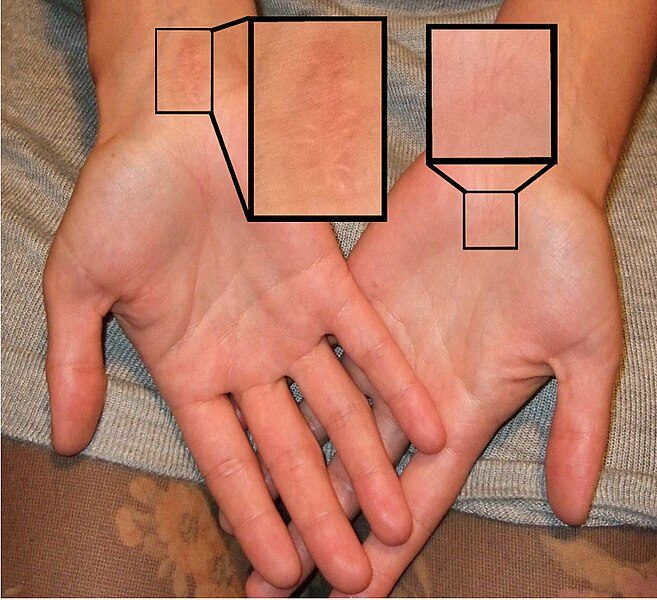In the demanding world of office settings, maintaining optimum hand function is paramount. The incessant typing and mouse usage can sometimes lead to debilitating conditions such as Carpal Tunnel Syndrome (CTS). Fortunately, there’s a beacon of hope through carpal tunnel surgery, specifically designed to alleviate the discomfort and restore hand function. This procedure is a common respite for many office workers facing the menace of CTS. This article delves into the pre and post-operative journey of carpal tunnel surgery, shedding light on what to expect, preparation, the surgery procedure, and the road to recovery, especially tailored for the diligent office worker.
| Section | Summary |
|---|---|
| What is carpal tunnel surgery? | An overview of carpal tunnel surgery and how it alleviates CTS symptoms. |
| Why is carpal tunnel surgery common in office workers? | Explanation on the prevalence of CTS among office workers. |
| Benefits of carpal tunnel surgery for office workers | Delving into the relief and improved hand function post-surgery. |
| Pre-operative evaluation and preparation | Guidelines on how to prepare for the surgery. |
| Surgery procedure | A brief on what occurs during the surgery. |
| Post-operative care and recovery | Insights into the recovery process, from immediate post-op care to returning to work. |
| Potential risks and complications | An outline of possible risks and how to mitigate them. |
What is Carpal Tunnel Surgery?
Carpal Tunnel Surgery, medically known as carpal tunnel release surgery, is a procedure performed to alleviate symptoms of Carpal Tunnel Syndrome (CTS). CTS is a condition that occurs when the median nerve, which runs from your forearm into the palm of your hand, becomes pressed or squeezed at the wrist. The surgery aims to relieve pressure on the median nerve by cutting the ligament pressing on the nerve, hence restoring normal nerve function and alleviating symptoms like pain, numbness, and tingling.
Why is Carpal Tunnel Surgery Common in Office Workers?
The modern office workspace requires employees to engage in repetitive hand and wrist motions, mainly typing and mouse usage. Over time, these repetitive motions can cause strain, leading to Carpal Tunnel Syndrome. Office workers are thus a significant portion of individuals who seek carpal tunnel surgery to relieve the symptoms of CTS and improve their hand function. Timely intervention through surgery not only alleviates discomfort but also prevents the condition from escalating to severe nerve damage.
Benefits of Carpal Tunnel Surgery for Office Workers
Undertaking carpal tunnel surgery can bring about a myriad of benefits for office workers. It is a gateway to regaining a comfortable and productive work life. Here are some notable benefits:
- Pain Relief: The foremost benefit is the alleviation of pain, which is achieved by releasing the pressure on the median nerve.
- Restored Sensation: Many individuals experience restored sensation in their fingers post-surgery.
- Improved Strength: Over time, patients may notice improved strength in their hand and wrist, making it easier to execute daily tasks at work.
- Enhanced Dexterity: The surgery can enhance finger dexterity, which is crucial for typing and handling small objects.
Pre-operative Evaluation and Preparation
Before embarking on the surgical journey, proper preparation is vital. It begins with a comprehensive evaluation by the surgical team at Canova Medical to understand your medical history and the severity of your CTS. This assessment forms the basis for personalized pre-operative preparation guidelines. Here are some general steps involved:
- Medication Review: Your surgeon will review your current medications and may advise you to stop taking certain medications before surgery.
- Transportation Arrangements: Since you won’t be in a position to drive post-surgery, arranging for transportation to and from the surgery center is prudent.
- Time Off Work: Plan for some time off work to allow for recovery. The duration will depend on your job demands and how quickly you recover.
Surgery Procedure

The surgery procedure for carpal tunnel release is relatively straightforward and is usually performed under local anaesthesia. It primarily involves making a small incision in your wrist or hand, through which the surgeon will cut the ligament that’s putting pressure on the median nerve. The procedure usually takes about 30 minutes, and most patients go home the same day.
Post-operative Care and Recovery
Post-operative care is crucial for a smooth recovery timeline. Initially, you may experience some pain and swelling, which can be managed with prescribed pain medication and by keeping your hand elevated. Here’s what the recovery journey entails:
- Pain Management: Your doctor will prescribe pain medication to help manage discomfort post-surgery.
- Physical Therapy: Engaging in physical therapy will help to strengthen your hand and wrist muscles, improving your range of motion.
- Regular Follow-up: Regular follow-up appointments with your surgeon will ensure that your recovery is on track.
The recovery timeline varies from person to person. However, with diligent post-operative care and adherence to your surgeon’s instructions, you can expect a steady recovery and eventual return to your normal work routine.
Potential Risks and Complications
Like any surgical procedure, carpal tunnel surgery comes with its set of potential risks and complications. These may include infection, bleeding, damage to the median nerve or surrounding nerves and tissues, and the potential for no improvement or worsening symptoms. It’s essential to discuss these risks with your surgeon at Canova Medical and understand the measures in place to mitigate them.
Resources for More Information

For those seeking a deeper understanding of carpal tunnel surgery, numerous resources are available. Engaging with these resources prior to your surgery can provide a more profound understanding and set realistic expectations. Your surgeon at Canova Medical will provide comprehensive information, and reputable health websites also offer valuable insights. Don’t hesitate to seek second opinions or engage in forums where others share their personal experiences.

Several related sub-topics can provide a more rounded understanding of what to expect from carpal tunnel surgery. These include:
How to Prepare for Carpal Tunnel Surgery as an Office Worker
Preparation is a pivotal step towards ensuring a successful surgery procedure and a smooth recovery. Some preparatory steps include:
- Stopping Certain Medications: Some medications can interfere with the surgery or recovery. Ensure to discuss this with your surgeon.
- Arranging Transportation: Plan for someone to drive you to and from the surgery as you won’t be able to drive immediately post-surgery.
- Taking Time Off Work: Discuss with your employer and plan for some time off work to recover adequately.
What to Expect During the Carpal Tunnel Surgery Procedure
Understanding the procedure will help in alleviating any anxiety. The surgery usually entails:
- Local Anaesthesia: The area will be numbed, but you’ll be awake during the procedure.
- Incision and Ligament Release: A small incision will be made to release the pressure on the median nerve.
How to Manage Pain After Carpal Tunnel Surgery
Post-operative pain management is crucial for a comfortable recovery. Some tips include:
- Prescribed Medication: Adhere to the medication prescribed by your surgeon.
- Ice and Elevation: These can help in reducing swelling and pain.
“The recovery from carpal tunnel surgery is a journey, not a race. It’s crucial to follow post-operative instructions diligently for the best outcome.” – Mr. Shoaib Arshad, Canova Medical
Exercises to Help with Carpal Tunnel Surgery Recovery
Engaging in exercises post-surgery under the guidance of a physical therapist can significantly aid in recovery. Exercises will help in:
- Strengthening Hand and Wrist Muscles: Building strength to restore functionality.
- Improving Range of Motion: Gaining back the full range of motion in your hand and wrist.
Tips for Returning to Work After Carpal Tunnel Surgery
Returning to work post-surgery requires a strategic approach to avoid strain and ensure a smooth transition. Some tips include:
- Gradual Resumption: Start with shorter work hours and gradually increase as you feel more comfortable.
- Ergonomic Tools: Utilize ergonomic keyboards and mouse devices to reduce strain.
- Regular Breaks: Take breaks to stretch and rest your hands and wrists.
These tips and insights aim to provide a holistic understanding and preparation for individuals, especially office workers, eyeing carpal tunnel surgery as a solution to their CTS woes. The journey from pre-operative preparation to returning to the work desk is a structured pathway designed to restore not just the hand function but also the quality of life.
Final Thoughts on Your Path to Recovery
Embarking on the journey of carpal tunnel surgery to alleviate the discomforts of Carpal Tunnel Syndrome is a significant decision, especially for diligent office workers. This guide has aimed to provide a comprehensive insight into what the journey entails from pre-operative preparations to the post-operative recovery phase. The tailored approach of Canova Medical ensures that each patient receives personalized care, making the road to recovery a structured and supportive experience. The end goal is not just to alleviate physical discomfort but to restore the quality of life, enabling a comfortable and productive work life.
For further reading, you might find these pages interesting:
- Carpal Tunnel Surgery: Canova Medical Approach
- A Senior’s Guide to Effortless Carpal Tunnel Recovery
Need help deciding whether carpal tunnel surgery is right for you?
Call us on 01625 529942 or Book a Consultation
FAQ
What is Carpal Tunnel Surgery?
Carpal Tunnel Surgery, also known as carpal tunnel release surgery, is a procedure aimed at alleviating symptoms associated with Carpal Tunnel Syndrome (CTS). This is achieved by relieving pressure on the median nerve in the wrist, which is the primary cause of CTS.
Why is Carpal Tunnel Surgery Common Among Office Workers?
Due to the repetitive nature of tasks such as typing and using a mouse, office workers are often prone to developing CTS. Carpal Tunnel Surgery provides a significant relief from the discomfort and other symptoms associated with CTS, making it a common choice among office workers.
How Long Does it Take to Recover from Carpal Tunnel Surgery?
The recovery timeline can vary from person to person. However, most individuals start to experience relief from symptoms shortly after surgery, with full recovery often occurring within several weeks to a few months.
Are There Any Risks Associated with Carpal Tunnel Surgery?
Like any surgical procedure, there are risks associated with carpal tunnel surgery such as infection, bleeding, and potential nerve damage. It’s important to discuss these risks with your surgeon prior to the procedure. When you visit our Wilmslow clinic, our surgeon will walk you through all the details.
Can I Return to Work After Carpal Tunnel Surgery?
Yes, you can return to work after carpal tunnel surgery. The timeline for returning to work largely depends on the nature of your job and your individual recovery progress.

